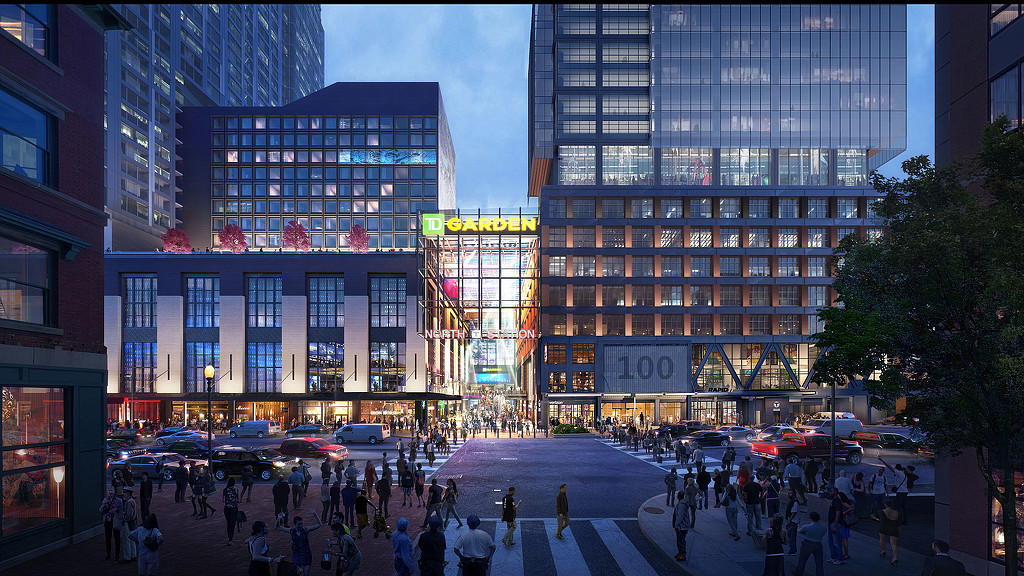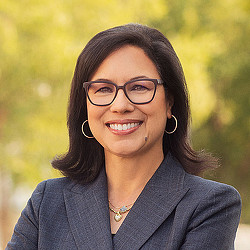Real Estate Must Offer Human Experiences, as We Escape Virtual Lockdown Living
December 10, 2020 | By Diane Hoskins
This post was originally published on the World Economic Forum’s Agenda.
- The recovery is an opportunity to realign real estate value with human experience.
- People have a choice — stay home or go out. As choice drives re-occupancy, people-focused real estate will rise in value.
- Such places can see more consistent returns, while less human-centric places may not.
As the post-pandemic world begins to emerge and people seek experiences outside of their homes, it is becoming clear the pre-pandemic real estate industry may have gone too far in how it valued real estate that was not fully conceived around people. Clearly, how buildings and places are designed to value human experience will be an important part of the equation as we enter a new era.
Places are essential for life. When we vacated many places due to the pandemic, we also lost the experiences that go with those places. Today, because of the pandemic, our understanding of the relationship between the experiences and the places we value is sharper than ever before.
The human need for movement, spontaneity, interaction, variety, and other experiences hardwired into us as hunter-gatherers is only possible when we have access to multiple places and settings. During confinement, living in a “mono-place” satisfied health and safety requirements, but the cost in terms of quality of life have been severe. We need a “multi-place” life to be fully human, and real estate is critical to meeting that. Looked at that way, real estate post-pandemic has more value than current valuation models allow. This realization could reshape the way we design our workplaces, hotels, retail, schools, and cities.
Mixed-use developments, town centers, and a growing focus on placemaking and community have increased over the past two decades. However, in the post-pandemic recovery, choice — the potential to provide different experiences — will be the driver, not prior patterns. Stay in or go out? Real estate’s new source of value is that it is the platform outside of the home for experiences beyond the virtual.
Real estate values have been on a roller-coaster ride over the past nine months, because the answer to these questions is still emerging. Three recent studies by the Gensler Research Institute shed light on the fundamental relationship between human experience and real estate.
Work in the right place
In April and September 2020, the institute studied responses from over 2,300 workers across the U.S. to understand their experience working from home (WFH) during the pandemic. While tasks and basic functionality were effective in a WFH arrangement, most people want to return to the office because of the benefits that proximity to others brings to their work.
According to the institute’s research, only 12% of respondents want to work from home 100% of the time, with 44% preferring a hybrid arrangement that allows flexibility to work one to four days per week at home. The study also found that 88% want the office to be part of their weekly work experience.
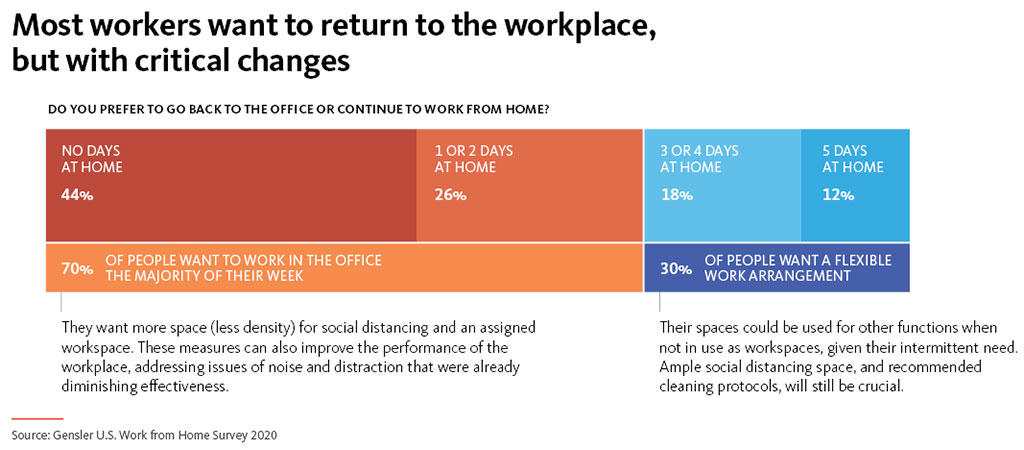
Retail is more than the goods
In its ongoing work in understanding the relationship between experience and place, the institute developed the Gensler Experience Index. Through surveys and ethnographic studies, research demonstrated that places, including retail shops, restaurants, and other destinations, are successful when providing a broad set of experiences beyond the transaction, task, or service they provide.
Since 51% of shopping motivation is the opportunity for entertainment, socializing, learning and inspiration, in the post-pandemic environment, the value of retail real estate will be elevated if it offers a range of engagement experiences beyond consumer transactions. Online shopping is here to stay, but having more than one retail option is critical for the post-pandemic consumer.
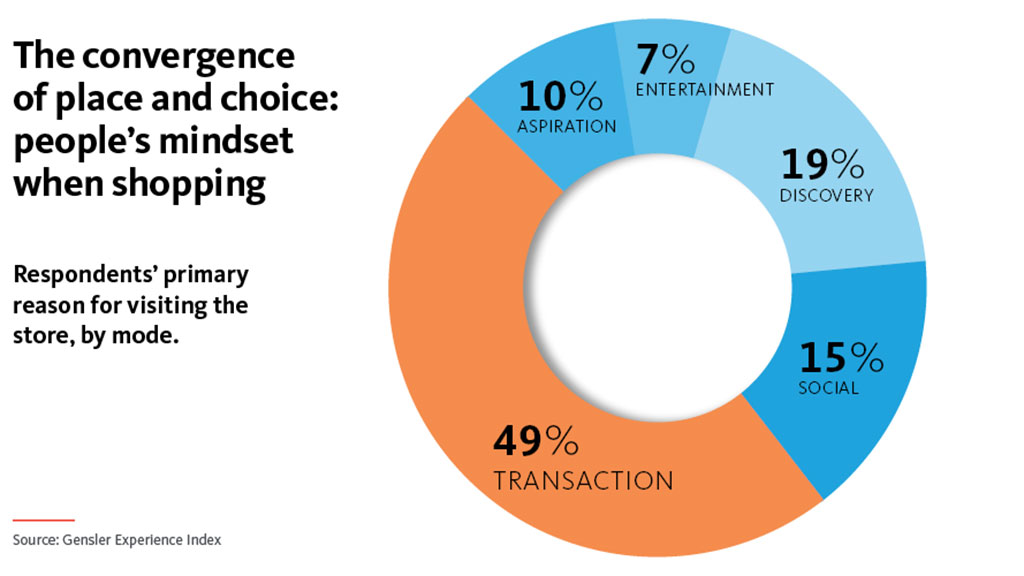
The 20-minute neighborhood
In May and August of this year, the institute’s City Pulse Survey was conducted in New York, San Francisco, Singapore, and London, gauging people’s experiences in these cities by looking at a wide range of indicators. It found that roughly two-thirds of people have increased their interest in moving since COVID-19. Unsurprisingly, public transportation was the main driver, due to health concerns. According to the findings, respondents indicated an interest in moving to suburbs, smaller cities, and rural areas because these places would provide closer proximity to working and shopping without long commutes on public transit.
It is important to state the obvious: Respondents were not considering a move so that they could remain at home in the post-pandemic future. On the contrary, a move facilitates access to places outside of their homes to fulfill their human needs. People are looking for cities where commercial, residential, institutional, and humanitarian real estate are in the same districts and neighborhoods. This trend is the driving idea behind the 20-minute neighborhood in the U.S. (or, similarly, the 15-minute city concept in Paris) and is gaining attention around the idea that cities need to provide easy access to places and experiences.
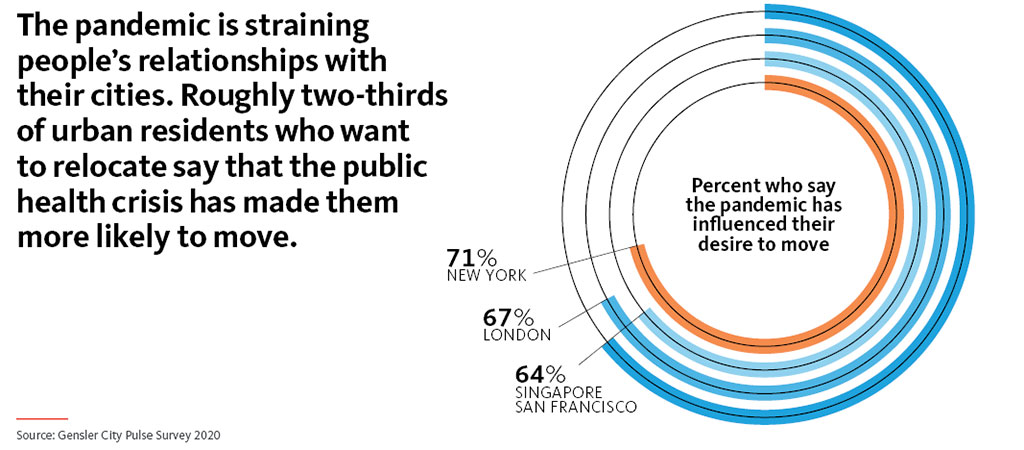
Creating healthy, resilient, and equitable neighborhoods
The pandemic has impacted the ability of buildings to facilitate the social interactions they are designed to deliver. When examining our cities from a value framework, the places that do not support health and wellness lose value because people refuse to occupy them. Cleanliness and health and safety have the potential to be human experience expectations that will drive value in the post-pandemic environment as well.
People shape cities and their neighborhoods, but these places also have the power to shape who we are. The designs of our cities are reflections of us. Our realization of the importance of equitable and inclusive design will become a hallmark of real estate developments as we move forward.
Climate change remains the defining issue of our time, and making healthy buildings for people and the planet will be critical. Making real estate people-orientated also means carbon mindfulness and embracing the circular economy. It’s not a zero-sum game, as these goals are complementary and mutually aligned.
Beyond financial value
Human-oriented design is a powerful opportunity because it adds value to real estate, and the benefits for society are cumulative. People have a choice to either stay home or go out. There will be winners and losers in the post-pandemic future as people begin to prioritize their use of real estate based on its human experience value.
Creating a built environment that motivates us to leave our homes requires a more holistic design approach focused on people’s experiences. Design must understand what drives behavior, promotes human interaction, and optimizes effectiveness.
Transforming real estate this way not only creates financial returns for developers and investors by creating a product that is in higher demand, but it also brings value to individuals, organizations and society as a whole. Our experiences are enabled by a vast array of places to work, live, and play effectively, while providing inspiration, connection, and discovery. Real estate is the stage on which life is lived, and its value can be maximized if it is designed to enhance those experiences.
For media inquiries, email .
